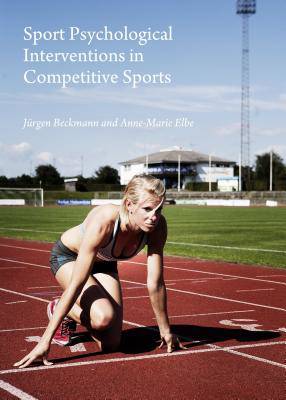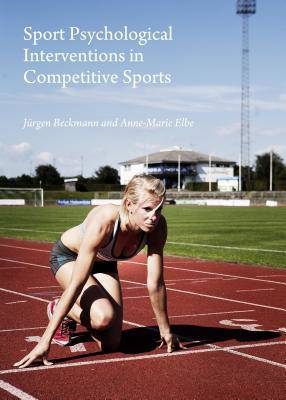
Je cadeautjes zeker op tijd in huis hebben voor de feestdagen? Kom langs in onze winkels en vind het perfecte geschenk!
- Afhalen na 1 uur in een winkel met voorraad
- Gratis thuislevering in België vanaf € 30
- Ruim aanbod met 7 miljoen producten
Je cadeautjes zeker op tijd in huis hebben voor de feestdagen? Kom langs in onze winkels en vind het perfecte geschenk!
- Afhalen na 1 uur in een winkel met voorraad
- Gratis thuislevering in België vanaf € 30
- Ruim aanbod met 7 miljoen producten
Zoeken
Sport Psychological Interventions in Competitive Sports
Jurgen Beckmann, Anne-Marie Elbe
Hardcover | Engels
€ 67,45
+ 134 punten
Omschrijving
Sport psychological training, an important part of athletes' preparation, can give them the final edge in competition. This book provides a systematic structure for conducting sport psychological interventions that can be followed not only by sport psychologists, but also by athletes and coaches. The authors describe sport psychological measures that are based on scientific knowledge and have proven to be valuable in their applied work. The book is divided into two main parts. Part 1 presents the basic structure for sport psychological interventions and Part 2 focuses on concrete interventions and training measures. Part 1 further addresses the importance of personality factors for sports performance, illustrates how an athlete's personality development can be enhanced, gives basic knowledge about diagnostic tools, and discusses talent selection. The second part of the book describes basic training, which focuses mainly on relaxation techniques, as well as skills training, essential for the stabilisation of athletic performance. Maintaining a balanced recovery-stress state is particularly important for the avoidance of overtraining. The book illustrates how athletes' stress and recovery levels can be monitored in order to prevent overtraining. Part 2 further addresses how critical situations in an athlete's career (including, for example, conflicts, career termination, and injuries) are to be handled, presenting various impact interventions, including clinical hypnosis. The final chapter of the book presents a mental toolbox, giving the practitioner an overview that will help to quickly identify a problem, its possible causes, and solutions.
Specificaties
Betrokkenen
- Auteur(s):
- Uitgeverij:
Inhoud
- Aantal bladzijden:
- 240
- Taal:
- Engels
Eigenschappen
- Productcode (EAN):
- 9781443865197
- Verschijningsdatum:
- 1/10/2014
- Uitvoering:
- Hardcover
- Formaat:
- Genaaid
- Afmetingen:
- 147 mm x 206 mm
- Gewicht:
- 476 g

Alleen bij Standaard Boekhandel
+ 134 punten op je klantenkaart van Standaard Boekhandel
Beoordelingen
We publiceren alleen reviews die voldoen aan de voorwaarden voor reviews. Bekijk onze voorwaarden voor reviews.









